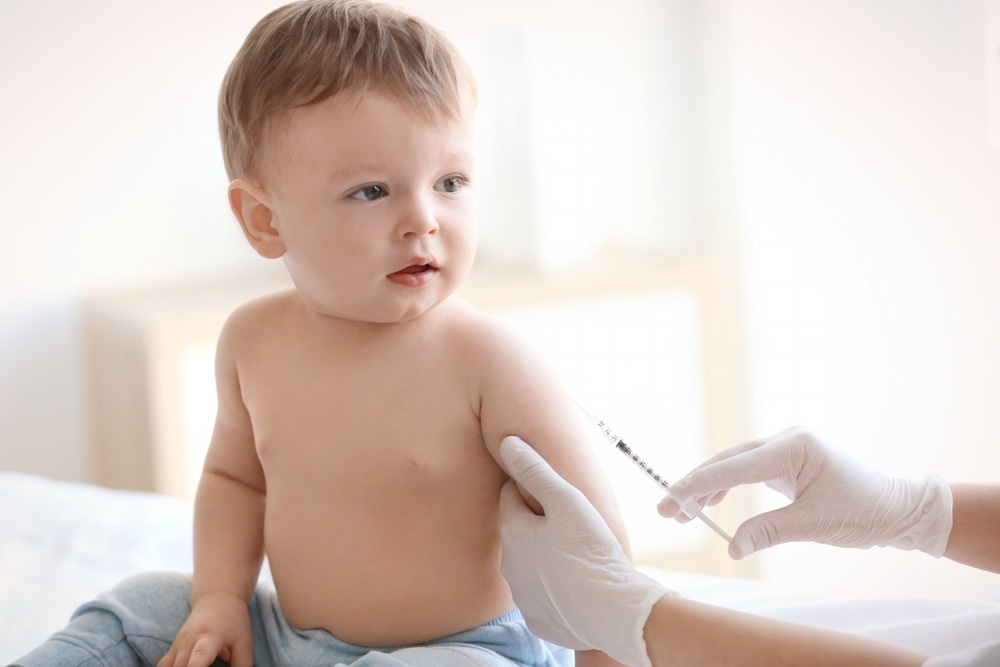In a recent study published in BMC Public Health, researchers evaluated the impact of MomsTalkShots, a personalized application, on maternal attitudes toward vaccinations.
 Study: MomsTalkShots, tailored educational app, improves vaccine attitudes: a randomized controlled trial. Image Credit: New Africa/Shutterstock
Study: MomsTalkShots, tailored educational app, improves vaccine attitudes: a randomized controlled trial. Image Credit: New Africa/Shutterstock
Background
Expecting females and mothers are often concerned regarding vaccinations, and the KABs (knowledge, attitudes, and beliefs) for vaccines are associated strongly with vaccine behavior. Mothers usually decide on vaccinations for their children during or soon after the initial delivery. Thus, the pre-birth period is optical for maternal and infant vaccine education. The authors previously found that MomsTalkShots considerably increased the uptake of influenza vaccines among pregnant females who were reluctant otherwise.
About the study
In the present randomized controlled trial (RCT) study, researchers designed the MomsTalkShots application and evaluated the applications’ impact on vaccine KABs.
MomsTalkShots represented a patient-level constituent of a multilayer intervention for improving the uptake of vaccines among mothers and infants that comprised practice- and provider-scale health interventions. The practice-scale health interventions were based on the CDC (Centers for Disease Control and Prevention) AFIX (assessment, feedback, incentives, and exchange) model. The provider-scale health interventions were based on the CME (continuing medical education) VaxChat module and a book on the vaccine safety of clinicians.
The participants were recruited from diverse health practices dedicated to prenatal care in Georgia and Colorado from June 2017 to July 2018, randomized at the practice- and patient levels, and followed up until March 2019. Only adult women aged ≤50 years, who spoke English, and had gestational ages between week 8.0 and week 26 [since tetanus, diphtheria, and acellular pertussis (Tdap) vaccine is recommended between week 27 and week of gestation) were included in the study.
All 2,087 study participants were asked to complete baseline surveys on attitudes toward infant and maternal vaccinations and two surveys for follow-up assessments at ≥1.0 months and ≥1.0 years after the birth of their infants, respectively. Among the participants, 1041 individuals were allocated randomly to be provided with educational videos via MomsTalkShots, tailored algorithmically to their attitudes, demographics, and intentions toward vaccines. The application was designed as an online website for accessibility through several internet browsers on tablets, computers, and smartphones.
The application began with user registration, followed by a survey, and education-oriented videos responsive algorithmically to the users’ vaccine KABs, demographics, and intentions. The videos imparted information from pediatricians and obstetricians with animated narrations and were designed based on reportedly effective approaches to improve vaccine discussions of healthcare providers with their patients.
The videos followed a presumptive approach for patients intending to get vaccinated, empathized with those with concerns, and carefully addressed the concerns in terms of disease risks and vaccination benefits in protecting against disease. The videos could be re-watched after users logged in between the survey time points. Schedules for individual-level randomization were generated for 22 practices by the block randomization method (each block of size 8.0). The surveys comprised questions (with multiple choices to answer) and Likert scales for assessing vaccination intentions and constructs for latent vaccine KABs, respectively.
KAB constructs included confidence in vaccine efficacy and safety, discerned severity of and susceptibility to vaccine-preventable disorders, self-efficacy (individual-level beliefs in one’s execution abilities to attain specific goals), descriptive and injunctive norms (those done and approved by individuals, respectively), discerned knowledge of vaccines, and credibility of the vaccine data sources. Multilevel mixed-effects linear regression modeling was used for the analysis.
Results
Out of 3,904 pregnant females initially considered eligible, 1,391 were unwilling to participate, and 303 women did not complete the enrollment process. As a result, 2,087 pregnant women were considered for the final analysis. Among the participants, 1,524 (73%) and 1,117 (54%) filled out the first and second follow-up surveys, respectively. Fifty-six percent of the participants intended to get vaccinated for Tdap and influenza during pregnancy.
In addition, 16%, 14%, and 13% intended to receive one vaccine, receive no vaccines, and were not sure, respectively. Eight-one percent, 11%, and 8.0% of the mothers intended for their child to receive all recommended vaccines, to receive a few/none of the recommended vaccines, and were not sure, respectively. After a month of infant births, the application elevated discerned risks of influenza among mothers (61%) compared to controls (55%) with an odds ratio (OR) of 1.6.
Likewise, confidence in the efficacy of influenza vaccines was higher among the application users than controls (73% versus 63%, OR 2.0), and so was discerned knowledge of vaccines (55% versus 48%, OR 1.4). Among pregnant women not intending to get vaccinated, the application elevated the discerned risk of influenza (38% versus 32%; OR 2.1) and confidence in influenza vaccine efficacy compared to controls (44% versus 28%, OR 2.6).
After a year of infant births, the application enhanced discerned vaccine knowledge (62% versus 50%, OR 1.7) and trust in vaccine-related data provided by pediatricians and obstetricians (64% versus 55%, OR 1.5). Among participants unsure of vaccinations, the application elevated discerned knowledge of vaccines (47% versus 12%, OR 6.9) and reduced infant concerns regarding the safety of infant vaccinations (71% versus 91%, OR 0.2).
Conclusion
Overall, the study findings underpinned previous findings and showed that the MomsTalkShots application improved vaccine knowledge and perceptions among pregnant women and mothers. The application could address vaccine reluctance by providing widely accessible data customized to individual concerns and demographics and is currently being updated to benefit the global population.